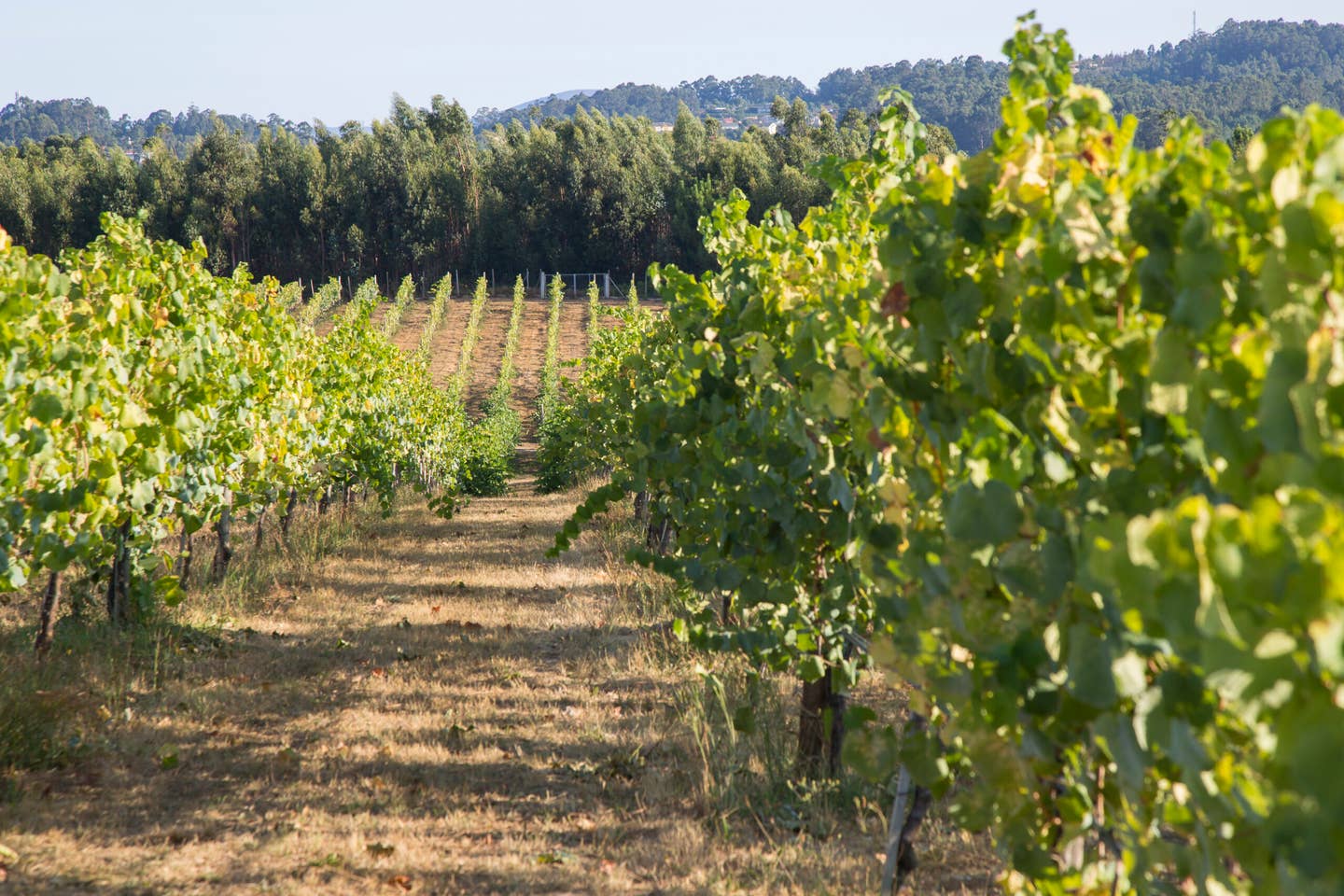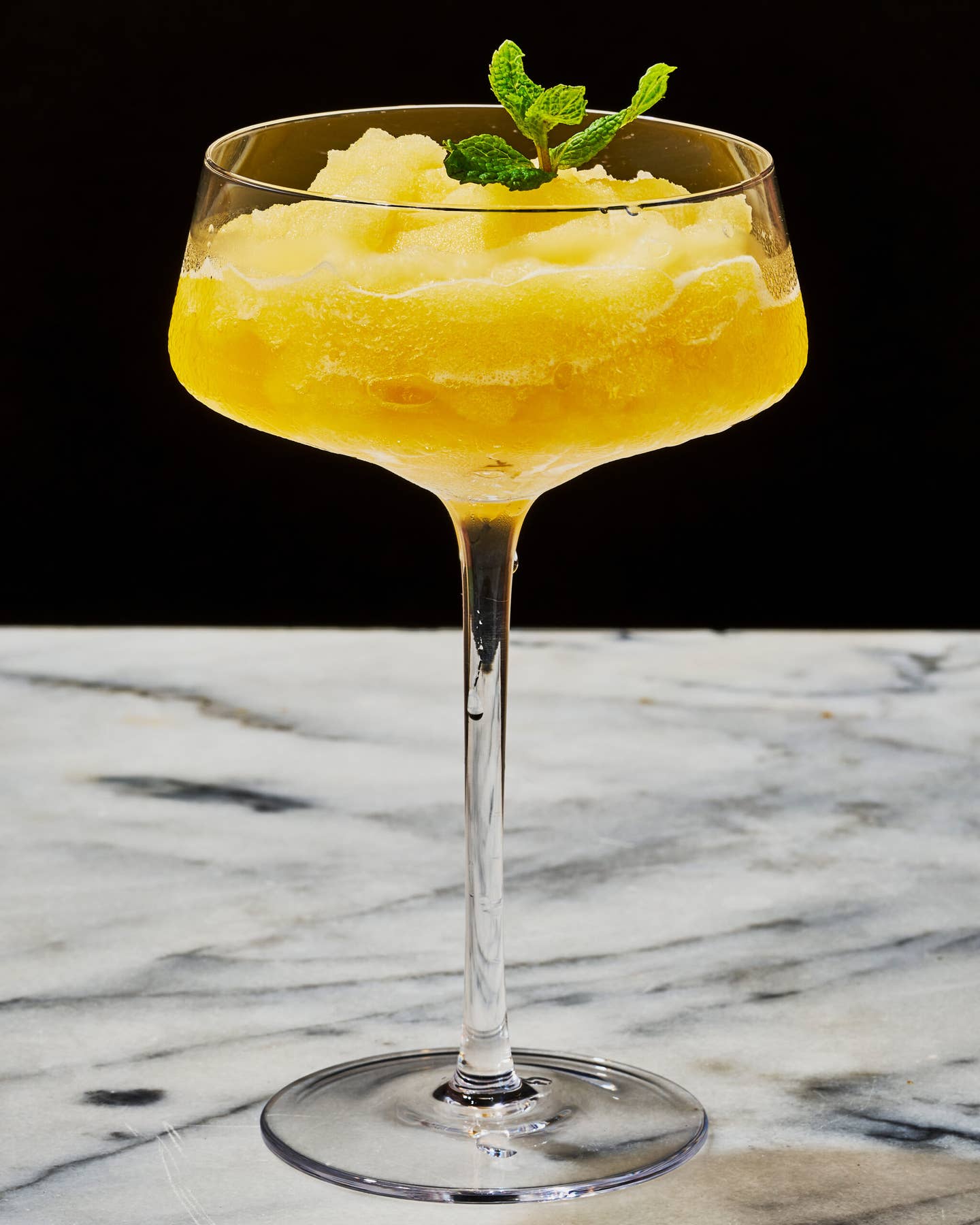
In Portugal’s Vinho Verde, Wine Is Green in More Ways Than One
A single-varietal—and sustainable—renaissance is upon us.
When you look around Portugal’s Vinho Verde region, which is blanketed with emerald vineyards, it will seem obvious how the area got its name. But verde (Portuguese for green) refers to the style of wine—meant to be enjoyed soon after bottling—for which the region is best known: light, fresh, and quaffable, with just a hint of spritz to tease the tongue. It would be a shame to pigeonhole Vinho Verde, though, as just a place for picnic wines. Throughout the years, a focus on single-varietal bottlings such as Alvarinho, Loueiro, and other native grapes began to reveal a more complex side to Vinho Verde. Quinta de Santiago is among the wineries ushering in a renaissance.
Vinho Verde—including its especially celebrated winemaking subregion of Monçao e Melgaço—is nestled in the northwestern part of the country, where Spain winks at you from just a couple of miles away. This area is renowned for Alvarinho, a distinctive style of wine with bright citrus and tropical notes, not to mention salinity and minerality, that can be attributed to the location’s granitic soils and warmer climate. Bordered by the Minho River, and still relatively close to the ocean, the volley of sea and land provides some of the most soulful cuisine in all of Portugal, and Spain’s influence kisses many of the dishes. (Bacalhau, or cod, is popular—instigated by the Bacalhau Campaign, a mandate set in 1934 to expand the cod fishing industry in Portugal—and the abundance of livestock farms means lamb and pork weigh heavily into the diet.) It’s here in Monçao e Melgaço where Quinta de Santiago got its start.
The land on which this winery sits was purchased in 1899 by the great-grandfather of current proprietor Joana Santiago. Grapes were an afterthought on the family estate; fruit, livestock, and grains were the heart of the farm. The recognition of VinhoVerde as an official wine region in 1908—and the potential for a new agricultural industry—didn’t sway the polyculture on the estate either. It wasn’t until the 1970s, when growers in the region noticed that the Alvarinho grape variety was thriving more than the red grapes, that this type of wine saw a renaissance in Melgaço and began to supplant many of the less profitable red grapes. Joana’s grandmother, Maria de Lima Esteves Santiago, began to take an interest in viticulture—and quietly transformed the estate.
Affectionately called Mariazinha by her family, she was what one might now call a garagiste winemaker (someone who makes wine casually at home). She lacked formal wine training but built upon the rudimentary winemaking knowledge that was freely shared among neighbors to produce small amounts of wine. Flouting government regulations, Maria sold her back-of-house wines through the front door of the family home, while keeping up a legitimate business selling grapes.
The moon and its cycles influenced her work. She followed its rhythms, letting it dictate when to prune and plant. (For example, when the moon is in a descending phase in the sky, energy is directed towards roots and soils; this is the time to prune vines and spread compost.) A focus on natural composting to limit chemical fertilizers helped nurture the soils and the vines. Although her practices weren’t given any particular name at the time, she essentially followed what would today be considered biodynamic farming.
As a young girl, Joana spent every vacation at her grandmother’s property working alongside Mariazinha in the vineyards and fields. Although Joana says the family was fairly aristocratic, the farm and the winery were Maria’s domain. “I never even saw my grandpa enter the winery,” Joana recalls with a laugh. And when Joana and Maria would retire for the day, they would head to the kitchen. Like her winemaking, Maria’s cooking was also guided by her intuition. Although she had collections of recipes, she still let her senses make the final decision when it came to adding a pinch of salt or extra dash of spice. Joana attributes her love of both cooking and winemaking to Maria.
It might seem strange to make a life change at the age of 86, but when stars align, certain choices become inevitable. Not only was Monçao e Melgaço gaining popularity for its wines, Joana was then pregnant with her first child and ready to quit her job as a lawyer to build a business. “My grandmother challenged me not to start anything else,” Joana recalls. Maria pointed to the beautiful fruit on her vines and the popularity of her garagiste wines—and announced it was time to stop selling grapes and start making wine under the family name.
Joana’s father joined the ambitious women in the endeavor, and the Quinta de Santiago label instantly became a multigenerational affair. But Maria spearheaded the operation. She was the one to name the estate and put the now-signature hearts—inspired by embroidery styles of the region—on the label. She also worked with a trained winemaker to further refine the operation’s techniques.
Sadly, Maria passed away two years later. “2010 was the only vintage she ever saw in the market,” says Joana. But her legacy lives on through the estate’s winemaking techniques. Quinta de Santiago uses native yeasts for fermentation, which is not a very common practice in the region. Instead of immediately pressing and separating the juice from the skins, the winemakers put the wine through a short period of maceration to give it a bit of texture. And they continue to work as sustainably as possible in the winery and the vineyards, prioritizing water conservation, especially when it comes to irrigating vineyards, and limiting chemical use. The winery also actively participates in the Porto Protocol, an international non-profit organization focused on combating climate change in the wine industry. Joana’s grandmother’s presence still lingers in the estate, with Joana constantly pushing and evolving what is possible with their wines. And because bright acidity runs through all the bottles, the wines seem to channel the very energy of Maria herself.
Given the estate’s focus on single-varietal whites, especially Alvarinho, it’s no surprise that white wines grace the table more often than reds in Joana’s home. Fermentation in oak barrels and judicious use of malolactic fermentation provides a roundness and structure to the citrus fruits that enable the whites to pair well with Maria’s rich or even unctuous dishes, some of which are preserved in her worn, dog-eared handwritten cookbooks, which are some of Joana’s most cherished possessions. Octopus rice is a must-have during the holidays, while lamb Monção roasted in the estate’s wood-burning oven always fills the kitchen with toasty aromas. One of Joana’s particular favorites is ham pudim, which reminds her of her grandmother’s sweet tooth.
Maria set in motion a new identity for the family—as winemakers. She taught them to take risks, to prioritize sustainability and low-intervention winemaking, and to make drinkers rethink what they know about wines from the Vinho Verde region. Today, Quinta de Santiago has graduated from a backyard project to a full-fledged winery—and Maria’s vision continues to be the guiding light.
Recipes
Keep Reading
Continue to Next Story










